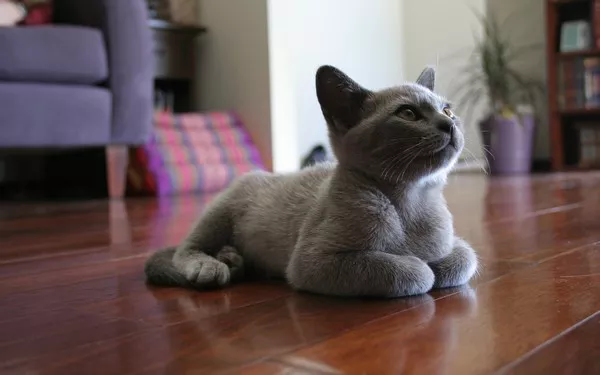Cats, with their enigmatic charm and independent nature, have long fascinated and delighted humans. While dogs are often associated with obedience and training, the notion of training a cat might raise eyebrows. However, contrary to popular belief, cats are indeed trainable creatures, and understanding the process and timeline for training cat is key to fostering a harmonious relationship. In this article, we will explore the intricacies of cat training, unraveling the mysteries behind the time it takes to fully train a cat.
The Myth of the Untrainable Cat:
Cats have earned a reputation for being independent and aloof, leading to the widespread belief that they are untrainable. While it’s true that cats have a different approach to training compared to dogs, dismissing their ability to learn is a misconception. Cats are highly intelligent animals with the capacity to understand and respond to cues and commands.
Factors Influencing Training Time:
Age of the Cat:
The age at which training begins significantly impacts the overall time it takes for a cat to learn commands and behaviors. Kittens are generally more receptive to training, and early exposure to positive reinforcement can establish good habits. Older cats can also learn, but patience becomes a crucial factor in their training journey.
Previous Experiences:
Cats with positive experiences during their early socialization period are likely to adapt more readily to training. Conversely, cats with negative or limited experiences may require additional time and patience to build trust and confidence.
Individual Personality:
Just like humans, cats have unique personalities. Some cats are naturally more curious and eager to learn, making training sessions more engaging. Others may be more reserved or cautious, necessitating a gentler and more gradual approach to training.
Training Techniques:
The methods employed in training play a pivotal role in determining the duration of the training process. Positive reinforcement, where desirable behaviors are rewarded, tends to be the most effective approach. Negative reinforcement or punishment can lead to anxiety and reluctance in cats, prolonging the training period.
Basic Training Commands and Timeline:
Litter Box Training:
Litter box training is one of the initial lessons for a cat. Kittens often learn this behavior from their mothers, but if not, it typically takes a few days to a few weeks for them to grasp the concept. Consistency and placing the litter box in a quiet, accessible location are key factors in successful litter box training.
Sit and Stay:
Teaching a cat to sit and stay on command is achievable with patience and positive reinforcement. This basic training can take a few weeks to a couple of months, depending on the cat’s age and personality. Regular, short training sessions are more effective than extended, infrequent ones.
Recall (Coming When Called):
Training a cat to come when called, also known as recall, can take several weeks to a few months. This command is particularly useful for ensuring the cat’s safety, especially if it is allowed outdoors. Gradual progression and enticing rewards can encourage the cat to respond reliably.
High-Five or Paw Shake:
Fun tricks like giving a high-five or a paw shake appeal to a cat’s playful nature. Training for these tricks can take a few weeks to a couple of months, with positive reinforcement and repetition being key. These tricks are not only entertaining but also strengthen the bond between the cat and its owner.
Harness and Leash Training:
Harness and leash training for cats is a more involved process. It may take several weeks to a few months for a cat to become comfortable wearing a harness and walking on a leash. Patience, positive reinforcement, and allowing the cat to explore at its own pace are crucial during this training.
Effective Training Techniques:
Positive Reinforcement:
Positive reinforcement involves rewarding desired behaviors with treats, praise, or affection. Cats respond well to positive reinforcement, associating the desired behavior with a positive outcome. This approach builds trust and makes training a positive experience for the cat.
Clicker Training:
Clicker training involves using a clicker to signal that a desirable behavior has been performed, followed by a reward. The click serves as a consistent and immediate marker for the cat. Clicker training can accelerate the learning process, especially for more complex behaviors.
Consistency and Patience:
Consistency is crucial in cat training. Regular, short training sessions are more effective than infrequent, lengthy ones. Patience is equally important, as cats may take time to understand and respond to commands. Rushing the training process can lead to stress and reluctance.
Understanding Body Language:
Cats communicate primarily through body language. Understanding a cat’s cues and expressions enhances the training process. Observing signs of stress or discomfort allows the trainer to adjust the approach and create a positive training environment.
Challenges in Cat Training:
Resistance to Handling:
Some cats may resist handling, especially around sensitive areas like paws and ears. Gradual desensitization, where the cat is exposed to gentle touches and rewarded for cooperation, can help overcome resistance.
Fear or Anxiety:
Cats are sensitive to changes in their environment, and fear or anxiety can hinder the training process. Creating a calm and secure training space, along with gradual exposure to new experiences, can alleviate anxiety.
Lack of Interest:
Cats may lose interest in training if sessions become repetitive or unengaging. Introducing variety, using enticing treats, and keeping training sessions short and enjoyable can combat a lack of interest.
Conclusion:
In unraveling the timeframe for training a cat, it becomes evident that patience, understanding, and positive reinforcement are essential elements in the process. While the duration varies based on individual factors such as age, personality, and previous experiences, the rewards of a well-trained and responsive feline companion are immeasurable. Embracing the uniqueness of each cat and tailoring the training approach to suit their needs ensures a positive and enriching training journey. As feline mysteries unfold through training, the bond between cat and owner deepens, creating a harmonious companionship built on trust and mutual understanding.
























